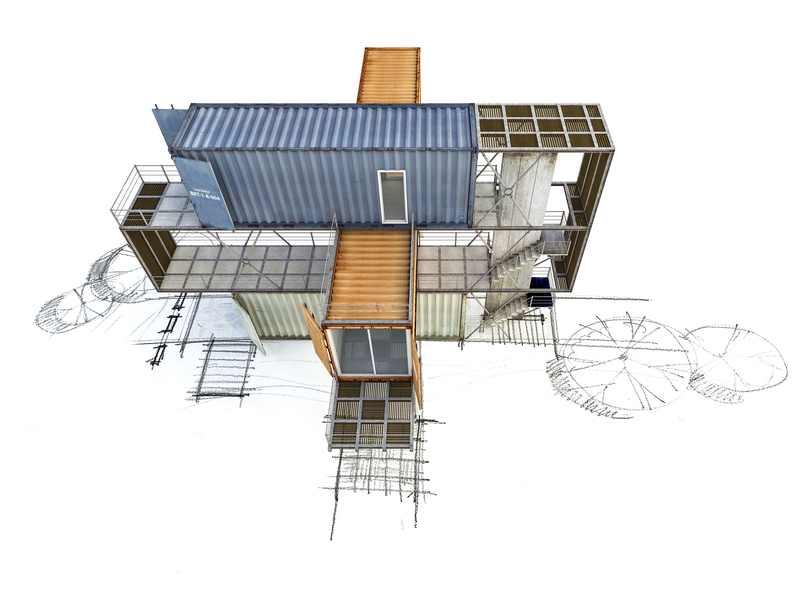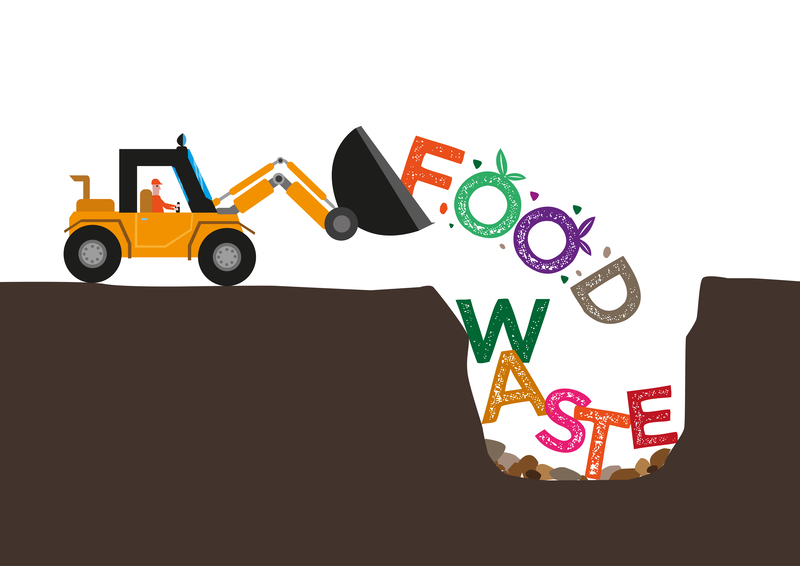The Ultimate Guide to Streamlined Office Spaces
Are you looking to transform your office into an efficient, clutter-free zone that boosts productivity and well-being? This comprehensive guide explores everything you need to know about creating a streamlined office space. From design principles to practical organization strategies and the latest technology, we'll walk you through every aspect of optimizing your workspace for maximum performance and comfort.
What Is a Streamlined Office Space?
A streamlined office space is a modern workspace designed for efficiency, comfort, and productivity. These offices feature:
- Clutter-free environments
- Smart layouts that encourage workflow
- Minimalist aesthetics
- Effective storage and organization solutions
- Adaptive technology integration
Streamlined office environments foster creativity, reduce distractions, and support employee health. By removing excess and focusing on what truly matters, companies can create offices that help people do their best work.

Why a Streamlined Office Matters for Business Success
Benefits of a Streamlined Workplace
Adopting streamlined office design delivers significant advantages. Here's why businesses are prioritizing minimalist, efficient workspaces:
- Boosted Productivity: A tidy, organized office reduces mental clutter and distractions, helping employees stay focused and efficient.
- Improved Employee Well-Being: Comfortable, streamlined settings minimize stress and support physical health.
- Enhanced Professional Image: Clean, purposeful offices project a strong, sophisticated image to clients and partners.
- Efficient Use of Space: Better layouts and storage options enable businesses to make the most of every square foot.
- Cost Savings: Reduced need for unnecessary furnishings and supplies directly lowers expenses.
Streamlining your office is more than just an aesthetic choice. It's a strategic decision that positively affects morale, business growth, and your bottom line.
Key Elements of Streamlined Office Spaces
1. Intelligent Layout and Space Planning
The foundation of any streamlined workspace is a smart, functional layout. Prioritize open floor plans to encourage collaboration, while also including areas for privacy and focused work.
- Flexible Desks: Adaptable workstations cater to various job functions and allow easy reconfiguration.
- Defined Spaces: Designate zones for meetings, socializing, focused work, and relaxation.
- Cohesive Flow: Arrange furniture to create clear pathways and reduce crowding.
2. Decluttered, Minimalist Aesthetics
Minimalist design lies at the heart of the streamlined office space movement. Choose furniture and decor that's both functional and visually calming.
- Neutral Colors: Whites, grays, and soft earth tones provide a sense of tranquility and balance.
- Clean Lines: Select furnishings with simple, straight lines and minimal ornamentation.
- Less Is More: Keep only what's necessary. Remove excess furniture and decorative items.
3. Smart Storage Solutions
Effective storage is critical for keeping offices free of clutter. Consider these tips for organizing your workspace:
- Built-In Storage: Use cabinets, shelves, and drawers that blend seamlessly into walls or beneath desks.
- File Digitization: Reduce the need for physical file cabinets by scanning documents and using cloud storage.
- Personal Lockers: Encourage minimal desk clutter by giving employees secure spaces to store personal items.
4. Modern Technology Integration
Technology helps you create an efficient, connected office. In a streamlined work environment, it pays to invest in:
- Wireless Devices: Minimize visible wires and promote easy relocation of tech equipment.
- Cloud Platforms: Support remote work and collaboration with tools like Google Workspace or Microsoft 365.
- Smart Conferencing: Use modern video conferencing tools to enable seamless communication, even across distances.
5. Ergonomics and Employee Comfort
Creating a streamlined workspace involves prioritizing comfort through ergonomic design. Focus on:
- Adjustable Chairs: Provide back and lumbar support for all employees.
- Height-Adjustable Desks: Allow users to switch between sitting and standing to promote health.
- Quality Lighting: Use natural and adjustable artificial lighting for a fatigue-free environment.
6. Green Design and Sustainability
Sustainability is increasingly important in streamlined office spaces. Consider:
- Eco-Friendly Materials: Opt for recycled, low-emission furniture and decor.
- Energy-Efficient Lighting: Use LED bulbs and smart sensors to reduce power consumption.
- Biophilic Design: Bring nature indoors with indoor plants and natural elements to support well-being.
How to Streamline Your Office Space: Step-by-Step Guide
Step 1: Assess Your Current Office Environment
Begin by taking a thorough inventory. Identify what works and what doesn't in your existing space. Ask yourself:
- What areas are most cluttered?
- Where does workflow break down?
- Are there unused or underutilized areas?
- Do employees have ergonomic setups?
Step 2: Set Clear Goals and Priorities
Determine your main objectives for streamlining. For example:
- Increase productivity
- Improve collaboration
- Reduce stress
- Support remote work and digital transformation
Set measurable goals so you can track your progress and ROI.
Step 3: Declutter Ruthlessly
Remove everything unnecessary, from old office supplies to unused furniture and outdated technology.
- Adopt a "one-in, one-out" policy for new items.
- Digitize files and dispose of physical paperwork.
Step 4: Redesign Your Layout
Rethink your office floor plan for flow and accessibility.
- Use modular furniture to easily reconfigure spaces.
- Place shared resources (printers, copiers) where everyone can access them efficiently.
- Create cozy focus nooks or rooms for deep work.
Step 5: Invest in Practical Storage Solutions
Smart storage in a streamlined office space means you never waste time searching for supplies:
- Install shelves above desks.
- Use under-desk/ wall-mounted organizers.
- Encourage digital-first policies.
Step 6: Integrate Technology Thoughtfully
Use tech to streamline communications and workflows:
- Opt for wireless peripherals and smart displays.
- Choose apps to automate repetitive tasks like scheduling or inventory tracking.
- Use collaboration tools such as Slack, Microsoft Teams, or Asana.
Step 7: Enhance Lighting and Comfort
Lighting is one of the most critical aspects of a streamlined office. Combine natural light, ambient lighting, and task lights for the best results.
- Add plants or green walls to improve air quality and reduce stress.
- Offer break areas with comfortable seating for relaxation and informal meetings.
Step 8: Create Flexible Work Zones
With the rise of hybrid work, design offices to support both solitary concentration and teamwork.
- Install movable partition walls.
- Utilize hot-desking systems to maximize seat usage.
- Offer private areas for phone calls or video meetings.
Step 9: Cultivate a Culture of Organization
Encourage employees to maintain a streamlined workspace.
- Offer regular training on office organization tools and best practices.
- Set expectations for desk and common area tidiness.
Step 10: Review, Adapt, and Improve
Streamlining is an ongoing process. Schedule quarterly reviews to get feedback from your team and make adjustments as needed. Continuous improvement keeps your office space adaptive and efficient.
Design Tips for an Efficient Streamlined Office Space
Optimize for Natural Light and Views
Open up windows and use glass partitions to distribute natural light throughout the office.
Use Multipurpose Furniture
Choose tables, benches, and storage that serve multiple functions--e.g., benches with built-in shelving or desks that convert into meeting tables.
Maintain Consistency in Design
Stick to a cohesive color palette and material selection to create a unified, calming appearance.
Minimize Noise Distractions
Use acoustic panels, carpeting, and soft furnishings to absorb sound and provide a quiet, focused environment.
Invest in Quality, Not Quantity
Focus on essential, high-quality items that will stand the test of time and daily use.
Common Mistakes To Avoid in Streamlined Office Design
- Overcrowding: Don't fill your space with unnecessary furniture, even if it looks "empty."
- Neglecting Employee Input: Always consider feedback from team members who use the space daily.
- Ignoring Future Growth: Leave space for expansion or changes as your business develops.
- Poor Cord Management: Exposed wires can ruin the look and increase hazards.
- Forgetting Personalization: Allow employees some autonomy to personalize their desks--personal comfort matters!

Future Trends in Streamlined Workspaces
The future of streamlined offices is shaped by technology, wellness, and sustainability. Expect to see:
- Rise of remote-controlled and automated workspace solutions
- Increased use of sustainable, recycled materials throughout office design
- Adoption of AI-powered environmental controls for lighting, heating, and cooling
- Growth of flexible and hybrid office environments catering to different work styles
- Further integration of biophilic design to improve air quality, mood, and creativity
Conclusion: Unlocking the Power of a Streamlined Office Space
The ultimate streamlined office is more than just minimalist--it's a harmonious blend of efficiency, comfort, and adaptability. By understanding the core principles of a streamlined workspace, using the right design strategies, and embracing technological advancements, you can create an environment that supports both your business goals and your employees' well-being.
Whether you're updating an existing workspace or designing a new office from scratch, following these guidelines will help you achieve a modern streamlined office space that's ready for the future.
Invest in your office culture, embrace flexibility, and prioritize both form and function for a workplace where everyone can thrive.